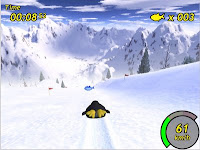
Chi vuole contribuire a aggionare questo elenco basta soltanto fare una segnalazione (nuove distro, distro che non funzionano più, distro che non sono vere distribuzione ma pacchettizzazioni da applicare a Ubuntu, ecc). Tutte quello che ritenete sia davvero utile.
L'elenco iniziale è stato preso da marcolinux. Quindi segnalatemi pure cambiamenti e novità.
Fluxbuntu
Fluxbuntu è una distribuzione leggera basata su Ubuntu che offre il desktop manager Fluxbox. Il principale obiettivo del progetto è di offrire un sistema operativo in grado di operare su molti dispositivi portatili e computer.
HomePage http://fluxbuntu.org/
Scibuntu
Scibuntu, Ubuntu Linux per scienziati e studenti. Scibuntu non è solo un altra distro Linux. E’ uno script che aggiunge programmi scientifici ed altri strumenti dedicati al desktop Ubuntu regolamentare.
HomePage http://scibuntu.sourceforge.net/
Linux Mint
Il proposito di Linux Mint è di produrre un elegante, aggiornato e confortevole desktop GNU/Linux, basato su Ubuntu. In sostanza ubuntu con parecchi codec proprietari (ubuntu+automatix, per capirci).
Homepage http://www.linuxmint.com
Ubuntu Media Center
Ubuntu Media Center è un sistema operativo completo, liberamente disponibile con il supporto della comunità. Poichè gli utenti devono scaricarsi manualmente i codec per eseguire files .mp3, l’obiettivo di questo progetto è rendere disponibili i programmi per il multimedia nel modo più semplice possibile.
HomePage http://en.ubuntumediacenter.org/
Mythbuntu
Specificatamente pensata per trasformare il proprio computer ina postazione multimediale o meglio in un Linux Media Center.
Homepage http://www.mythbuntu.org/
UbuntuStudio
Indirizzata alla produzione multimediale in generale e supportata da Canonical Ltd. Il kernel di Ubuntu Studio è stato opportunamente modificato in modo da offrire una bassa latenza e garantire un ottimo ambiente di lavoro per elborazioni audio, video e grafiche intensive.
Homepage http://ubuntustudio.org/
Ubuntu Ultimate Edition
Si differenzia da Ubuntu per il numero elevato di software libero aggiunto. Il team di sviluppo è lo stesso che ha dato vita a Ubuntu Christmas Edition e dal punto di vista tecnico si tratta di un remastering con l’aggiunta di molto software più che di un fork di Ubuntu.
Homepage http://ubuntusoftware.info/
UfficioZero
Completamente in italiano e ottimizzato per le necessità di un ufficio moderno e non solo… grande attenzione è stata posta nei riguardi degli utenti meno esperti, che troveranno un sistema semplice, completo, sicuro e personalizzabile a portata di click.
HomePage http://www.ufficiozero.org/
Guadalinex
Guadalinex è una distribuzione basata su Debian per la regione spagnola dell’Andalusia. La versione basata su Ubuntu di Guadalinex 2005 è stata rilasciata a Ottobre 2005.
Homepage http://www.guadalinex.org/
Arabian Linux
Arabian Linux è un CD avviabile, con una collezione di software GNU/Linux, pieno supporto alla lingua araba e inglese e riconoscimento automatico dell’hardware.
HomePage http://www.arabian-linux.org/
MoLinux è una distribuzione sviluppata dal governo regionale di Castilla la Mancha in Spagna per l’uso degli uffici governativi e delle scuole.
Alcune delle più importanti nuove caratteristiche di questa versione, comprendono: aggiunta del media center XMBC per il controllo di musica, videos e foto in una applicazione centralizzata; nuovo design del boot, della splash e della schermata di login GDM; aggiunta di trasparenze alle finestre delle applicazioni aperte; miglioramento della compatibilità hardware; ext4 come file system predefinito; versioni aggiornate dei programmi installati; aggiunta di MolinuxSync, uno strumento per la sincronizzazione i dati di un gruppo di lavoro; inclusione di Psychosynth, un sintetizzatore musicale interattivo e modulare.
Scheda completa e istruzioni per il download
EduPuppy GioveLUG
EduPuppy GioveLUG è una distribuzione Linux sviluppata dal GioveLUG di Terracina, Italia. Il suo obiettivo principale è di fornire un sistema intuitivo e libero per bambini con una ricca dotazione di si strumenti educativi e giochi.
Homepage http://www.giovelug.org/articles.php?lng=en&pg=98
gNewSense
Un progetto GNU/Linux per rendere Linux sempre più libero. Per fare ciò è previsto un set di scripts per permettere a chiunque di produrre una distribuzione GNU/Linux.
HomePage http://www.gnewsense.org/
Ichthux
Ichthux è un sistema operativo dedicato ai cristiani. E’ basato su Kubuntu in modo da offrire il migliore DE del momento, insieme a programmi cristiani.
HomePage http://www.ichthux.com/
Ubuntu Christian Edition
Ubuntu Christian Edition è un sistema operativo completo disegnato per cristiani e basato su Ubuntu Linux. Se non sbaglio include anche un firewall apposta per filtrare i siti che sono potrebbero risultare “peccaminosi”…
Homepage http://www.whatwouldjesusdownload.com/christianubuntu/
Ubuntu Muslim Edition
Versione di Ubuntu islamica, con filtri di navigazione, software per leggere il corano e simili. Disponibile anche la versione KDE.
Homepage http://www.ubuntume.com/
nUbuntu
nUbuntu o Network Ubuntu è un progetto che prende la distro Ubuntu e rimasterizzata come un LiveCD e installabile con strumenti necessari ai test di penetrazione di servere e reti. La principale idea è quella di rendere Ubuntu facile da usare con un mix di strumenti per i test di penetrazione.
Homepage http://www.nubuntu.org/
ImpiLinux
Impi Linux è una distro sudafricana basata su Ubuntu, focalizzata su ambiente governativo ed enterprise.
Homepage http://www.impilinux.co.za/
mEDUXa
mEDUXa è una distribuzione Free Software GNU/Linux sviluppata con propositi educazionali e parte del progetto MEDUSA. Installato in 35,000 computers distribuiti in 1100 scuole, che rappresenta 325,000 possibili utenti (25,000 insegnanti e 300,000 studenti) delle Isole Canarie.
HomePage http://www.grupocpd.com/archivos_documentos/info_meduxa/meduxa_project_released
Symphony OS
La differenza principale che caratterizza e distingue Symphony OS è la presenza del rivoluzionario desktop enviroment Mezzo. Questo ambiente desktop e molti altri aspetti caratterizzanti di Symphony OS, sono stati progettati per ottenere una semplicità ed una usabilità estrema.
Homepage http://www.symphonyos.com/
Kiwi Linux
Localizzata per Romania e Ungheria, include codec, Flash e Java per Firefox ed il supporto alle partizioni NTFS di Windows.
Homepage http://kiwi.startx.ro/
Geubuntu (OpenGeu)
Ubuntu con il desktop e17, nata da un idea italiana.
Homepage http://www.geubuntu.intilinux.com











